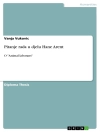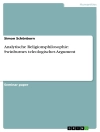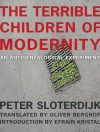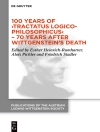Between 1984 and 1994 Jacques Derrida wrote and spoke a great deal about architecture both in his academic work and in connection with a number of particular building projects around the world. He engaged significantly with the work of architects such as Bernard Tschumi, Peter Eisenman, and Daniel Libeskind. Derrida conceived of architecture as an example of the kind of multidimensional writing that he had theorized in
Of Grammatology, identifying a rich common ground between architecture and philosophy in relation to ideas about political community and the concept of dwelling. In this book, Francesco Vitale analyzes Derrida’s writings and demonstrates how Derrida’s work on this topic provides a richer understanding of his approach to deconstruction, highlighting the connections and differences between philosophical deconstruction and architectural deconstructivism.
قائمة المحتويات
Acknowledgments
Introduction
1. The Law of the Oikos: Jacques Derrida and the Deconstruction of the Dwelling
2. The House in Deconstruction: Notes on Derrida and the Law of the Oikos
3. Jacques Derrida and the Politics of Architecture
4. Mythographies: Toward an Architectural Writing
5. Writing Space: Between Tschumi and Derrida
6. Divergent Traces: Peter Eisenman as an Interpreter of Deconstruction
7. Spacing: The Architecture of Deconstruction
Notes
Bibliography
Name Index
عن المؤلف
Francesco Vitale is Professor of Aesthetics at the University of Salerno, Italy. He is the author of
Biodeconstruction: Jacques Derrida and the Life Sciences, also published by SUNY Press, and the author and editor of several books in Italian on Derrida and contemporary French philosophy.
Mauro Senatore is a British Academy Fellow at Durham University in the United Kingdom and Adjunct Professor of Contemporary French Philosophy at the Instituto de Humanidades, Universidad Diego Portales, Santiago, Chile. He is the author of
Germs of Death: The Problem of Genesis in Jacques Derrida, also published by SUNY Press.












